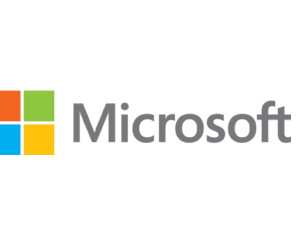Microsoft Teams makes it possible for companies to maximize their meeting impact with easy adoption, deployment and operation for staff.
That’s just the beginning. Microsoft Teams subscribers can combine the platform with hardware add-ons certified to work seamlessly with Teams and can choose to add a subscription to the Microsoft Teams Voice phone service.
BizTech recently sat down with Josh Walters, technical architect for Microsoft collaboration at CDW, to discuss the operational advantages of integrating Teams Rooms and Teams Voice alongside existing Teams solutions. Here’s what he had to say.
BIZTECH: What are Microsoft Teams Rooms?
Walters: Microsoft Teams Rooms are essentially what we would call traditional video endpoints, but they are geared toward integrating Microsoft teams ecosystems. They are a family of devices and device types dedicated video endpoints that live inside a meeting room or office space and can also be used to join third-party meetings, such as those on Cisco or Zoom.
Both Windows- and Android-based versions are available. Windows-based solutions run off a Windows-based PC platform called Windows IoT. The Android iteration used to be called Collaboration Bars, but it’s now known as Teams Rooms on Android and has been updated to have the same look and feel as Windows deployments.
DISCOVER: Learn more about how Microsoft Teams powers collaboration.
Teams Rooms are also persistent; they are physical pieces of hardware that sit inside a room. For the most part, these are fixed pieces of hardware that have cameras and audio equipment and are attached to displays in the room that show the farside participants and external attendees along with video inside.
Participants in the room join within the Teams Room device as their platform, while remote employees join from the standard Teams client from their PC or Mac.
BIZTECH: How can Teams Rooms enhance the collaboration experience that organizations enjoy with Microsoft Teams?
Walters: One of the great things about Microsoft Teams Rooms is the single user interface. Whether it’s on Windows or Android, it’s the same interface. The device is directly registered to Teams, and users click a single button to join the meeting.
While there are ways to join Microsoft Teams without a Teams Room, such as legacy video platforms using the Cloud Video Interop for endpoints, this costs money. And since every endpoint will look different, every interaction is different. This can create some complexity and a learning curve.
Teams Rooms also can enhance collaboration for users that don’t have scheduled meeting times using a feature called Proximity Join. This leverages Bluetooth to find a local meeting room and provides a way to access the Teams Rooms device and join the meeting hands-free.
BIZTECH: What kinds of hardware would one commonly find in Teams Rooms?
Walters: At the very base level, you’ll have cameras to showcase video, which may or may not be integrated into the same appliance; some are all-in-one devices, while others use standalone components. You’ll also have a device that runs the OS, likely a mini-Windows PC running Windows IoT or an Android device. You also need microphones, which could be all-in-one or separate solutions, such as ceiling microphones or puck-style microphones that bring in audio from different portions of the room.
Last but not least, you need some type of projector or display for video content. A lot of new devices that are all-in-one run the Android OS, camera, microphone input and output all on the same device. The Windows-based devices still require a mini-PC that plugs into the Teams Rooms deployment.
While Teams for Android and Windows boxes both have wireless capabilities, wireless is a bit iffy when you start talking about large-scale meeting rooms. The recommendation is for them to be hard-wired.
BIZTECH: Are Teams Rooms intended only for shared office spaces, or would a home office also be an appropriate place to use them?
Walters: The Windows 10-based Microsoft Teams Rooms are designed to be used in an office building. Teams on Android Personal Mode, meanwhile, allows you to authenticate with your personal account, meaning everything users see is on their own personal calendars. These can live inside your home office and let you access meetings directly.
BIZTECH: What are some ways an organization might look to secure a Microsoft Teams Rooms device?
Walters: Microsoft Teams Rooms devices are secure by default. However, it’s important to evaluate things like account and network security. The devices are secured using a specially provisioned user account that has a fully secured context policy applied. Windows-based devices should be a part of your normal patching policies so that Windows is kept up to date, and Teams on Android devices should be running the latest version of Teams on Android recommended by Microsoft.
From a network perspective, Microsoft Teams Rooms will require the same level of network access as a standard Microsoft Teams client — specifically, they will require the ability to connect to the same Microsoft connection points and ports described here. For organizations using Microsoft Endpoint Manager or Intune to manage devices, Android-based Microsoft Teams Rooms will likely require a special mobile device management policy to be applied to allow registration of these devices through the Intune Company Portal.
REGISTER: Explore the tools that will power the future of work in the weekly CDW Tech Talk series. Click the banner below to register.
BIZTECH: What is Microsoft Teams Voice?
Walters: Microsoft Teams Voice offers a way to integrate public switched telephone networks, or PSTN, with Teams Rooms deployments. There are two different ways to incorporate Microsoft Teams Voice: calling plans and direct routing.
Calling plans give users a pooled number of minutes per month. Those minutes are applied for outbound calls only; inbound calls to the recipient are free. You can maintain your existing contract and route calls inbound and outbound with your existing carrier experience. You can handle all of that on your own, or companies such as CDW can handle this as a managed service for you. Today, most customers choose direct routing.
What’s also becoming popular for many companies is making Teams their primary phone system to let them make and receive phone calls. Every single user that gets enabled on Teams gets a phone number that can be dialed from any other phone system.
BIZTECH: How does Teams Voice enhance the experience that businesses get with Microsoft 365 and Teams?
Walters: The big key is you start eliminating extraneous platforms you need to support and users need to understand. If you can bring experiences into one platform you get that “Microsoft experience” that people talk about. It creates a seamless experience across all devices that delivers key functionality all in one place.
BIZTECH: What is the benefit of integrating Teams Rooms equipment with a Microsoft Voice plan?
Walters: The benefit is that the device now becomes a phone. You can get rid of extra devices needed to both place and receive phone calls and create a consistent, cohesive digital meeting ecosystem.
You also get the ability to join meetings from other providers. A lot of those meeting platforms include dial-in bridge conferencing information. A Teams Voice plan lets you do that. It opens the device and makes it more universal to join more video platforms.
Brought to you by:













